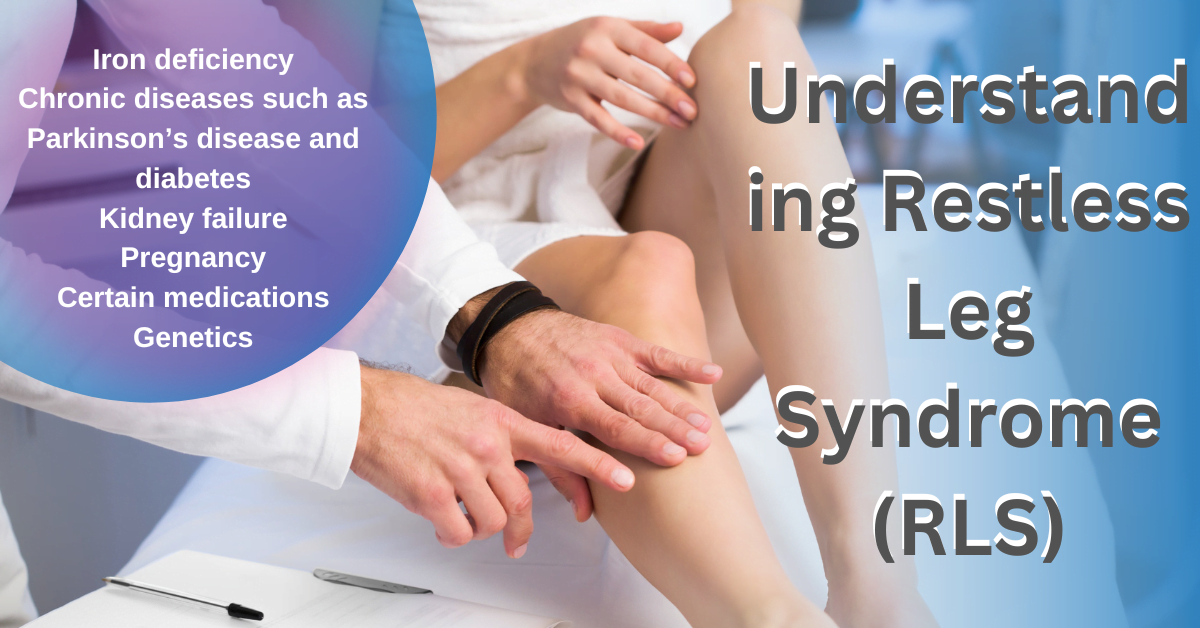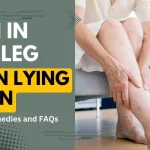Restless Leg Syndrome (RLS) is a common but often underdiagnosed neurological disorder that affects millions of people worldwide. It is characterized by an irresistible urge to move the legs, usually accompanied by discomfort or a crawling sensation. RLS can significantly disrupt sleep and lead to daytime fatigue, impacting the quality of life. In this guide, we’ll explore RLS in-depth, from its causes and symptoms to effective treatments and ways to manage the condition.
What is Restless Leg Syndrome (RLS)?
RLS is a condition that causes an uncontrollable urge to move the legs, often accompanied by uncomfortable sensations. The symptoms usually occur in the evening or at night and can make it difficult to fall asleep and stay asleep. RLS is also known as Willis-Ekbom disease, named after the Swedish neurologist who first described it in the 1940s.
Causes of Restless Leg Syndrome (RLS)
The exact cause of RLS is unknown, but there are several factors that can contribute to its development, including:
- Iron deficiency
- Chronic diseases such as Parkinson’s disease and diabetes
- Kidney failure
- Pregnancy
- Certain medications
- Genetics
Symptoms of Restless Leg Syndrome (RLS)
The main symptom of RLS is an overwhelming urge to move the legs, often accompanied by uncomfortable sensations such as tingling, burning, itching, or aching. These symptoms are usually worse at night and can make it difficult to fall asleep and stay asleep. Other symptoms may include:
- Fatigue
- Difficulty concentrating
- Mood swings
- Irritability
Diagnosis of Restless Leg Syndrome (RLS)
Diagnosing RLS can be challenging, as the symptoms are often similar to those of other conditions. To diagnose RLS, your doctor may ask about your symptoms and medical history and perform a physical exam. They may also ask you to keep a sleep diary for a few weeks to track your symptoms.
Treatments for Restless Leg Syndrome (RLS)
The goal of RLS treatment is to relieve symptoms and improve sleep. Some common treatments include:
- Medications such as dopaminergic drugs and anticonvulsants
- Lifestyle changes such as regular exercise, reducing caffeine and alcohol intake, and improving sleep hygiene
- Iron supplementation for those with iron-deficiency anemia
- Massage and hot or cold compresses
Managing Restless Leg Syndrome (RLS)
In addition to medical treatments, there are several self-care strategies that can help manage RLS symptoms, including:
- Regular exercise
- Stretching and massaging the legs
- Soaking in a warm bath
- Relaxation techniques such as deep breathing and meditation
FAQs on Restless Leg Syndrome (RLS)
Is RLS a serious condition?
While RLS is not typically a serious condition, it can significantly impact the quality of life by disrupting sleep and causing daytime fatigue. It is important to seek medical attention if RLS is affecting your daily life.
Can RLS be cured?
There is currently no cure for RLS, but there are treatments available that can help manage symptoms and improve sleep.
Is RLS hereditary?
Research suggests that RLS can run in families, indicating a genetic component. However, not everyone with a family history of RLS will develop the condition. Other factors such as iron deficiency, certain medications, and certain chronic diseases may also contribute to the development of RLS.
Can RLS be caused by stress?
Stress may be a trigger for RLS symptoms in some people, but it is not considered a direct cause of the condition.
Can RLS be treated with natural remedies?
While some people find relief from RLS symptoms with natural remedies such as magnesium supplementation and hot or cold compresses, it is important to consult a healthcare professional before trying any new treatment.
Conclusion:
Restless Leg Syndrome (RLS) is a common but often underdiagnosed condition that can significantly impact the quality of life. While the exact cause of RLS is unknown, there are several treatments available to help manage symptoms and improve sleep.
If you are experiencing symptoms of RLS, it is important to speak with a healthcare professional to determine the best course of treatment for you. With the right care and self-management techniques, it is possible to manage RLS and improve quality of life.




1 thought on “Understanding Restless Leg Syndrome (RLS)- A Comprehensive Guide”